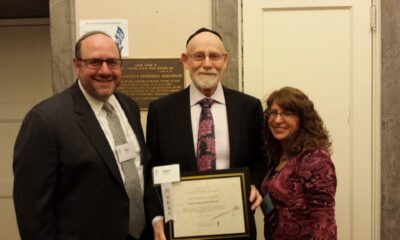Local News
Winnipeg congregations report largest attendances since 2019 for high holidays
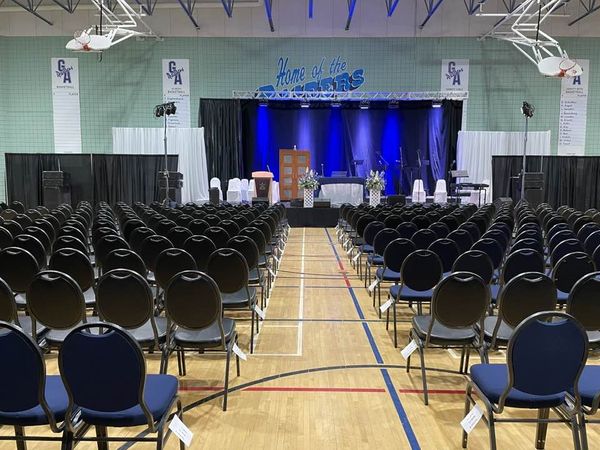
By MYRON LOVE It was a frailiche Yom Tov this year. From all reports, there seems to have been a real joy for people able to once again attend services without having to deal the Covid restrictions of past years.
The final numbers are in and they tell the story. Overall, Yom Tov attendance was almost back to where it was pre-Covid restrictions. Lets start with the Shaarey Zedek, our community’s oldest and largest congregation.
Dr. Rena Secter Elbaze , the Shaarey Zedek’s executive director, reports that close to 700 worshippers attended the main service, 268 more were at the family service and just over 340 followed online. In comparison, about 200 were in attendance in person last year and that number included attendance at both services.
For this year, we decided to have only one service,” Secter Elbaze says. “It was wonderful having everyone together again. Some people were really emotional about being able to come together again.”
As noted in my pre-High Holidays report, this was the second year that the Shaarey Zedek held Rosh Hashanah and Yom Kippur services in the gym of the Rady JCC. Regular Shabbas services have continued to be held in the Berney Theatre, with weekday services at Temple Shalom – while their long term, spiritual home is being updated and expanded. Elbaze had noted that “in an effort to show our members that we appreciate their patience and understanding during this period of construction, we offered all of our members free seating for Yom Tov for those who wanted to attend services in person, as well as congregants viewing the services on-line.”
Non-members, she added, were able to[purchase their seats and be eligible for free seating if they participated in the daily minyanim or volunteered their time to help with Shabbat minyanim.
A further incentive was the return of popular Rabbi Alan Green to join Rabbi Anibal Mass in leading the main service. Rabbi Mass also led the family service – accompanied by Grant Park High School Grade 12 student Noah Trachtenberg – in the Asper Campus Multipurpose room.
The Yom Tov experience was further enhanced for Shaarey Zedek worshippers by the participation of the popular Quartet and the 20-voice Ruach Folk Choir.
“We were very pleased with how everything turned out,” Elbaze says. “This was the best Yom Tov ever.
“And we are really looking forward to being back in our own building in time for next Yom Tov.”
The members of Congregation Etz Chayim are also looking forward to davening in their new building. Next month, the congregation is scheduled to leave their current 70-year-old location in north Winnipeg and move into the new Etz Chayim building.
Etz Chayim Congregation Executive Director Jonathan Buchwald wrote in an email: “The general feedback from congregants was that they really enjoyed services this year. It was noted, however, that there were some bittersweet feelings, as these were the final High Holy Day Services in the Matheson Avenue building. We are looking forward to holding services next year in our new home at 1155 Wilkes Avenue, formerly the Shriners headquarters, near the IKEA store in south Winnipeg.“
Buchwald reports that 500 tickets were sold in person for Rosh Hashanah and Yom Kippur, with another 70 screens watching on-line – which grew to 90 for Kol Nidre. Almost 200 people attended Ne’ilah services. He adds that about 60 people attended a special service in the junior auditorium, led by Deborah Spigelman and Nina Eilberg, which was designed for families of all ages,while 50 children of all ages attended the junior service.
“On the first day of Rosh Hashanah and on Kol Nidre,” he says, “we held a unique program designed for teens in grades 9 to 12 led by Halley Ritter,” Buchwald added.
“One of the highlights of our services occurred during Kol Nidre,” he noted. “It involved the removal of all our Sifrei Torah which were then held by various congregants for each of the three recitals of the Kol Nidre prayer. For the first recital, the Sifrei Torah were held exclusively by teenagers and young adults.”
Services were led by Rabbi Kliel Rose and Cantor Tracy Kasner – with Kelly Robinson leading the High Holy Day Choir.
The third largest gathering for the High Holidays this year was Rabbi Matthew Leibl’s brand new “Services on the River: A modern High Holidays” which were held at the scenic Gates on Roblin. “I was very pleased with the attendance,” says the rabbi, who has been in demand for weddings, funerals and other community events since he left the Shaarey Zedek four years ago. “I wasn’t sure what to expect,” added Rabbi Leibl.
He reports that 250 signed up for his Yom Tov services. “We had a good mix of ages. We had families, couples, singles, even multigeneration families.”
In our earlier pre-Yom Tov report, Rabbi Leibl had observed that he had a lot of people asking him what he was going to do for Yom Tov. “I perceived that there was a need for another alternative for High Holiday services,” he noted.
Services on the River: A modern High Holidays” were scheduled for the second day of Rosh Hashanah, Kol Nidre and Yom Kippur morning. “Because the shofar is not traditionally blown on Shabbat, we decided to celebrate Rosh Hashanah on the second day instead to be able to have the shofar in our service,” Rabbi Leibl pointed out in explaining why he didn’t offer services for the first day of Rosh Hashanah.
The three services were each 90 minutes in length. “My services were designed to offer moments of reflection and introspection, beautiful live music, and a celebration of the Jewish New Year, all against the pastoral backdrop of the Assiniboine River, which was also our site for Tashlich on Rosh Hashanah,” Rabbi Leibl noted.
“With the river right outside the door, there was a strong sense of serenity accompanying Tashlich,” he added.
Rabbi Leibl described “Services on the River: A modern High Holidays” as “a real team effort,” which he led in collaboration with the husband and wife cantorial team of Justin Odwak and Sarah Sommer.
Most likely, readers can look forward to a reprise of “Services on the River: A modern High Holidays” next year.
Still with the South End, both Ruth Livingston and Jack Craven, presidents respectively of Reform Congregation Temple Shalom and the Orthodox Adas Yeshurun Herzlia report good turnouts for the High Holidays this year – with new families at both their services. The Lubavitch Centre’s Rabbi Avroham Altein also reports some new families at the services this year.
Back in the North End, Rob Waldman, the president of the egalitarian Chevra Mishnayes congregation in Garden City, noted in an earlier interview that the board was not expecting much change from last year. Last year’s attendance was 90 – exceeding expectations. This year’s services, led again by Al Benarroch, also attracted about 90 people.
The venerable House of Ashkenazie, the last of our community’s older-style Orthodox congregations, was the only shul to report a bit of a decline in attendance from last year – when about 50 people came for the first day of Rosh Hashanah and over 40 for Kol Nidre. – numbers which were the best in some years.
One new option this year for frum members of our community living in the North End was the reborn Chavurat Tefila – on the corner of Hartford and McGregor – which has reopened – after being closed for three years – as the North End Orthodox Minyan. The new congregation began regular Shabbat services at the end of July. Yom Tov services attracted about 40 men and women, with Rosh Hashanah services led by Avi Posen – who came in from Israel – and Yom Kippur services by Cantor Natanel “Naty” Schlossberg from Brooklyn .
Finally, there was one more option for those seeking to attend a High Holiday service. After a two year absence, Camp Massad resumed its innovative Rosh Hashanah service last year. Daniel Sprintz, the camp’s executive director, was pleased to announce that Massad was again hosting its usual Rosh Hashanah program on the second day.
Local News
March of the Living 2023 participants form Taste of Hope project to help honour the memory of Holocaust survivor Alex Buckman
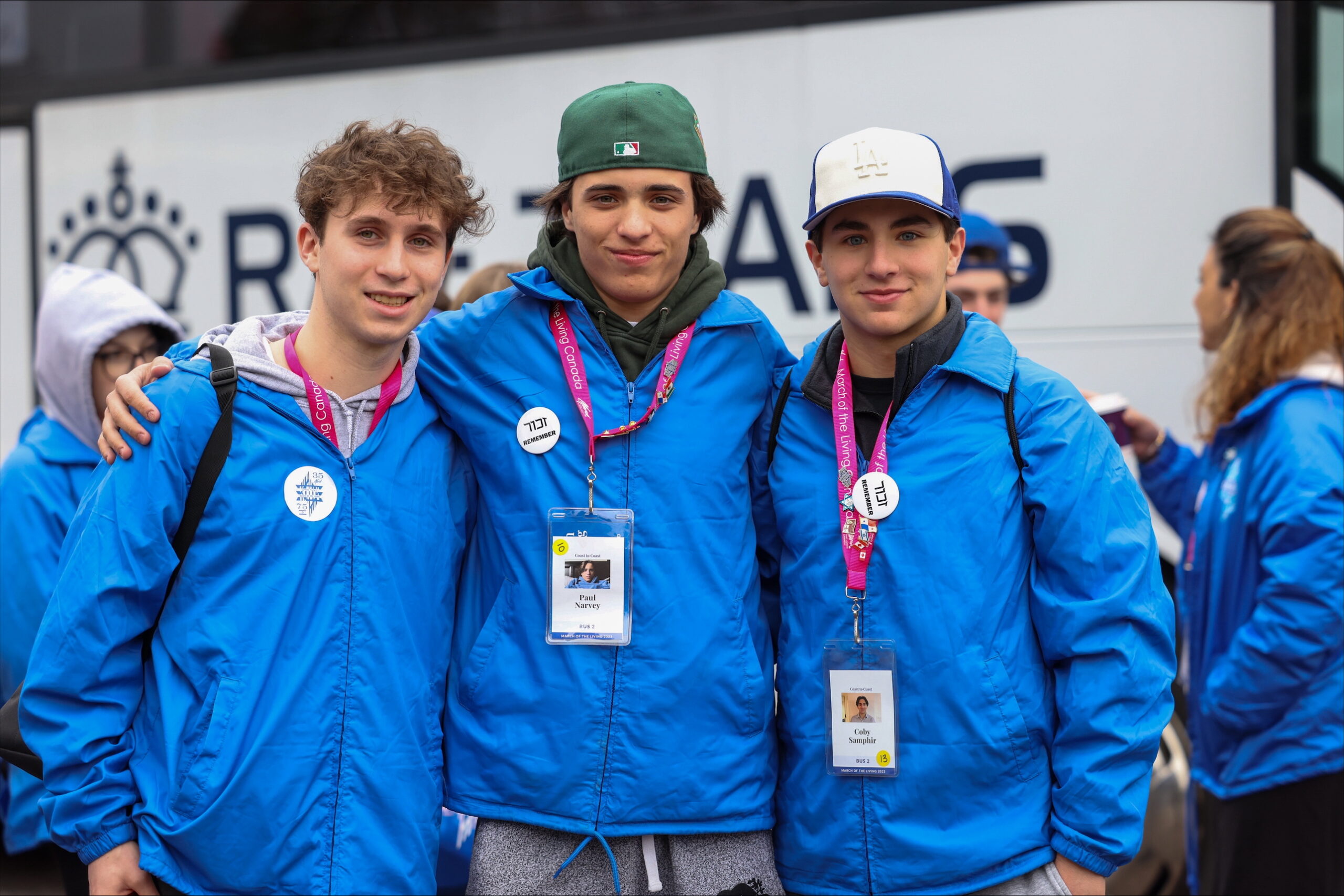
By BERNIE BELLAN The March of the Living is an annual two-week international educational program that brings thousands of students and adults to Poland and Israel to study the Holocaust, Jewish history, and the rise of the State of Israel. Founded in 1988, it features a 3-kilometer silent walk from Auschwitz to Birkenau on Yom HaShoah (Holocaust Remembrance Day).
Attendees on the march are accompanied by adults, some of whom themselves have been Holocaust survivors.
Following the week in Poland, participants travel to Israel to observe Yom HaZikaron (Israel’s Memorial Day) and celebrate Yom HaAtzmaut (Israel’s Independence Day), marking a journey from darkness to life.
For many years the coordinator of the march in Winnipeg was Roberta Malam, working on behalf of the Jewish Federation of Winnipeg. More recently Abby Flackman filled that role, and now the person in charge is Lindsey Kerr.
Since its inception 37 years ago the March of the Living has become a rite of passage for many young Winnipeg Jews who have been able to participate as an organized group from Winnipeg and combine visits to the death camp at Auschwitz-Birkenau in Poland with the subsequent trip to Israel.
Then – the Covid pandemic hit – in 2020, and the March of the Living was put on hold for two years – in 2020 and 2021.
In 2022, the March of the Living resumed, but there was no organized contingent from Winnipeg participating. (There may have been some Winnipeggers who did go on the march that year, but if there were any they would have been part of a general Canadian group since there was no Winnipeg coordinator that year.)
In 2023, however, once again a very large contingent of young Canadian Jews – 51 altogether, of whom approximately two-thirds were from Winnipeg, went on that year’s March of the Living. That particular march was memorable for many reasons, including the fact it was the last full march since 2019 and was to remain the last march to have an organized Winnipeg contingent in the past six years as the years 2024 and 2025 were interrupted by the war in Gaza. (There were smaller marches held in 2024 and 2025, but again there was no organized contingent from Winnipeg.)
Recently, we were contacted by one of the participants of that 2023 march, Ethan Levene, who asked us whether we’d be interested in running what turned out be a very poignant story about one particular aspect of that 2023 March of the Living.
Here is what Ethan wrote:
“In April 2023, the Coast to Coast Canadian delegation of March of the Living was privileged to travel with Holocaust survivor Alex Buckman (z”l). March of the Living is a Holocaust education trip that allows participants to visit and bear witness to the sites of the Holocaust. Unfortunately, while sharing his story in Poland, Alex passed away. However, the impact he left on us students was immeasurable.
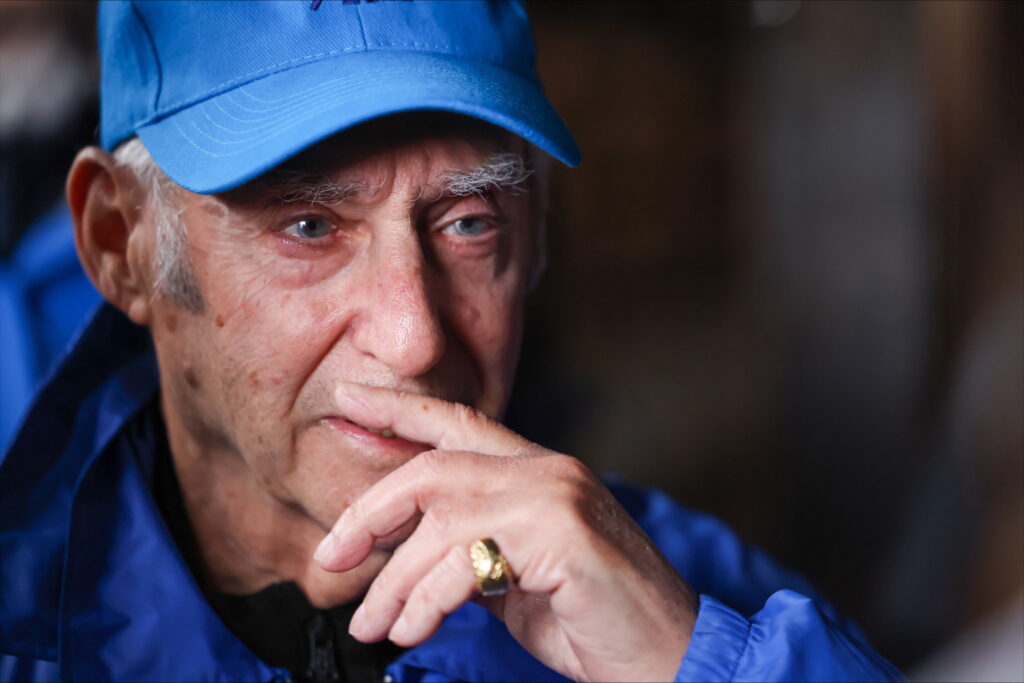
“While speaking to us in Warsaw, Alex told us the story of his Aunt Becky’s gâteau à l’orange (orange cake). While in Ravensbruck concentration camp, his aunt managed to write down this recipe. After his parents’ murder, his Aunt Becky went on to raise Alex after surviving. In addition to sharing his story, Alex tasked us with baking the cake with family and friends.
“Out of this, a group of alumni from our trip have created this project: ‘A Taste of Hope.’ On February 1st, university students from over 5 universities across Canada will come together to bake the gâteau à l’orange and hear Alex’s story. Proceeds from the event and this fundraising page will support the World Federation of Jewish Holocaust Survivors and Descendants. Alex was heavily involved with this organization, whose mission is to both create community for Holocaust survivors and their descendants and educate about the Holocaust to help fight against antisemitism and all forms of bigotry and hate.
“Here is information from our fundraising page for the event – ‘A Taste of Hope’: Fundraising for A Taste of Hope.
Ethan added that “it’s completely student led, all by alumni from our 2023 trip attending university at these various locations across Canada; Winnipeg, London, Kingston, Montreal.”
He also added: “Follow us on instagram@tastehope.“
Here is a link to a CBC story about Alex Buckman: Alex Buckman story
In a subsequent email Ethan gave the names of Winnipeggers who are involved in A Taste of Hope: Ethan Levene (studies at McGill), Zahra Slutchuk, Alex Stoller (studies at Queens), Coby Samphir, Izzy Silver (studies at Waterloo).
He also added names of others who are involved in the project: Jessie Ages, Anneke Goodwin, Lilah Silver, Ella Pertman, Ellie Vogel, and Talia Cherun.
To find out more about March of the Living in Winnipeg go to: March of the Living
Local News
Young Researcher Eryn Kirshenbaum 2025 recipient of the Institute of Cardiovascular Sciences prestigious Dr. T. Edward Cuddy Award
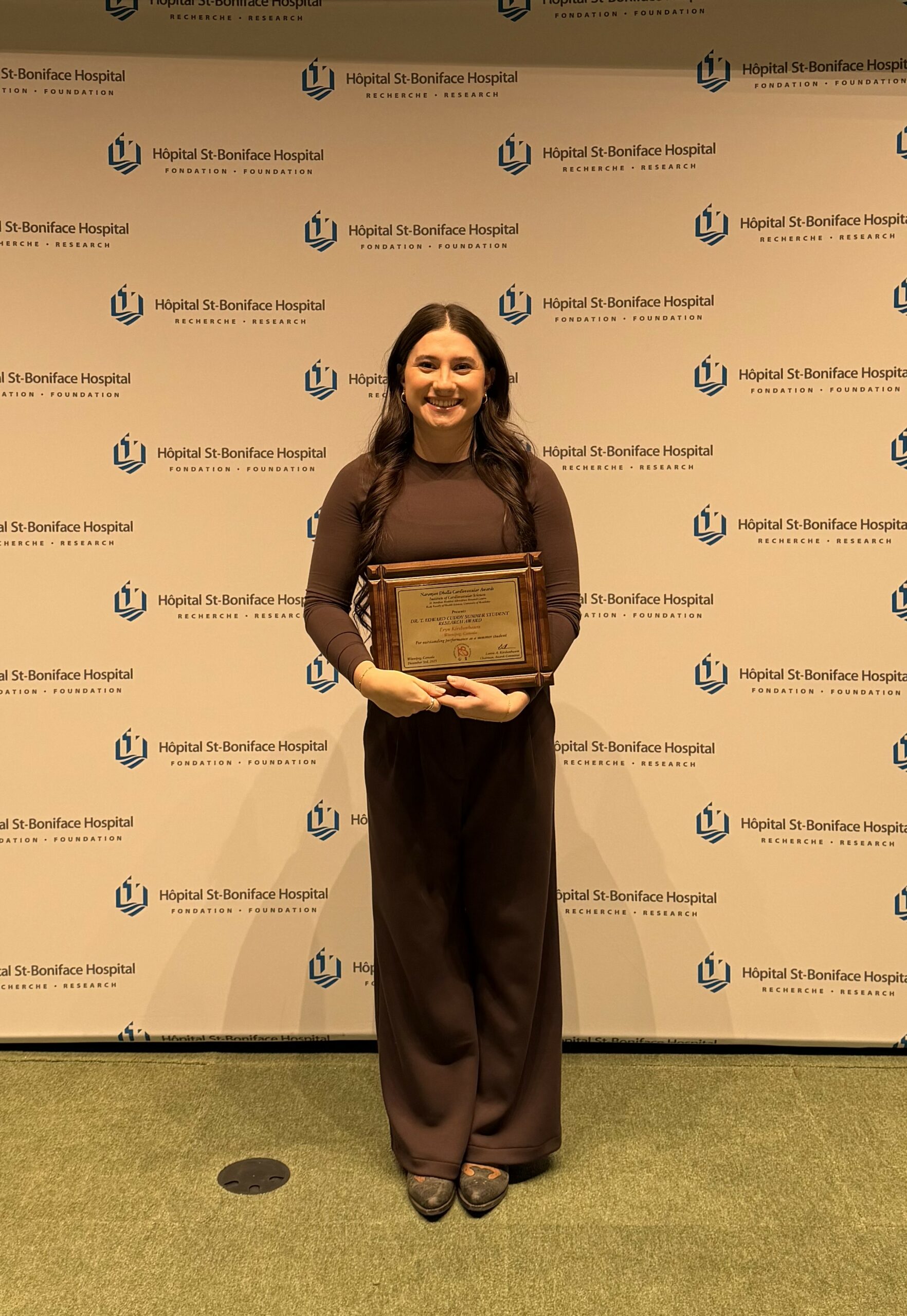
By MYRON LOVE Fifth year University of Manitoba Faculty of Sciences Microbiology student Eryn Kirshenbaum is this year’s recipient of the Dr. T. Edward Cuddy Student Award in recognition of her excellence in research under the supervision of Dr. Inna Rabinovich-Nikitin, Assistant Professor of Physiology and Pathophysiology, University of Manitoba and Principle Investigator in Women’s Heart Health Research at the Institute of Cardiovascular Sciences at the St. Boniface Hospital Albrechtsen Research Centre.
When asked for her reaction to learning she was the 2025 recipient of the student award, Kirshenbaum says “I was so honoured, humbled and excited to have been nominated and then chosen as the recipient out of many well deserving students.”
Rabinovich-Nikitin, Kirshenbaum’s mentor, says “This is Eryn’s third year working in my lab and I am incredibly proud of her for winning the Dr. T. Edward Cuddy Research Award.” She adds: “It is a truly deserved honour. Since joining my laboratory in 2023, Eryn has shown an exceptional combination of technical skill, intellectual curiosity, and professional maturity, becoming an integral contributor to our research on women’s heart health, an area of growing scientific importance that demands both rigorous methodology and a strong understanding of sex-based differences in heart disease.
“Not only has Eryn provided invaluable experimental support, but she has also taken on a leadership role in training new students and has demonstrated a strong commitment to collaboration and mentorship.”
In return, Kirshenbaum notes that she has “learned a lot from Dr. Rabinovich-Nikitin. She is a great mentor and I look forward to learning and growing even more under her leadership”.
The T. Edward Cuddy Award is one of 12 awards presented annually by the Institute of Cardiovascular Sciences in partnership with the University of Manitoba.
The 27th Annual Institute of Cardiovascular Naranjan Dhalla Awards were held on December 2nd and 3rd as part of a two-day conference comprised of a scientific forum and awards ceremony. The awards celebrate the leadership of individuals who have profoundly influenced the advancement of cardiovascular research, medicine and health education, including, in previous years, Nobel Prize winners and Gairdner Award Scholars. The Institute of Cardiovascular Sciences Gold Medal was awarded to Dr. Stanley Nattel, Director of the Montreal Heart Institute for his outstanding contributions to advancements in cardiac arrythmias and patient care.
Eryn Kirshenbaum, the daughter of Barry and Kim Kirshenbaum, says she was always interested in understanding the functioning’s of the human body, in particular the heart, which has fit with her desire to pursue a career in medicine and possibly continued heart health research.
A graduate of the Hebrew Bilingual program at Brock Corydon Elementary School, Ecole River Heights, and Kelvin High School French Immersion, Eryn says that she has always been interested in science, particularly cardiology. She reports that she has assisted as co-author on 5 research papers, including one where she was the primary author, focusing on women’s heart health and how heart disease affects women differently than men. That paper also investigated the connection between disrupted circadian rhythms and heart disease, specifically related to individuals with irregular sleep patterns, such as shift workers.
Eryn notes that, in addition to her university studies and research activities, she works part time as a Medical First Responder with St. John Ambulance – an activity which complements her medical research. “With St. John Ambulance, I have had calls dealing with the early stages of heart attacks and strokes as well as basic first aid,” she notes.
Readers might also run into Eryn at many Jewish celebrations such as Yom Ha’atzmaut, where she helps her dad with the family entertainment business.
While her ultimate goal, she says, is to practice medicine, she adds that she is really enjoying doing research.
Local News
Young entrepreneur Noah Palansky and partner Jordan Davis are the first Winnipeggers to crack Forbes Magazine’s “top 30 Under 30” list
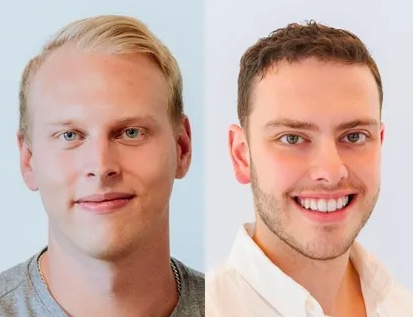
By MYRON LOVE From a very young age, Noah Palansky has demonstrated initiative and leadership. I first met and interviewed Palansky in 2011 at a low point in his life. His mother, Naomi Palansky, had sadly passed away at a young age. The then 12-year-old channeled his mourning into action. With his younger sister, Lexi, by his side – and the support of his father, Bruce – the preteen entered a team in the annual CancerCare Manitoba Foundation Challenge for Life. For the next few years, Palansky’s teams – under the banner, “Kids Count” – raised thousands of dollars for cancer researched.
Fast forward to 2019. Palansky was by then a young adult with a new initiative. The year before, he and a couple of friends had entered a potential business proposal in a competition sponsored by Winnipeg-based North Forge, Canada’s only start up incubator and fabrication lab, and won the top prize.
In that 2019 story, the young entrepreneur recalled how he came up with idea for his new business – TAIV (the AI stands for artificial intelligence). In the spring of 2018, he recounted, at the height of the Winnipeg Jets playoff run, he and his girlfriend were watching the game on a big screen while having drinks in a restaurant when an ad appeared onscreen promoting a rival restaurant and advertising the same drink he was imbibing – at a lower price.
“That ad gave me the germ of an idea,” he said in that earlier interview. “I immediately spoke to the restaurant manager and asked how he felt about the ad,” he recalls. “He was not pleased.”
That germ of an idea has developed into a highly successful new business venture. The idea that was put into practice has landed Palansky and his partner, Jordan Davis, on Forbes Magazine’s 30 Under 30 list in the Marketing and Advertising category. The duo are the first Winnipeg-based entrepreneurs to have received this honour.
“It came as a complete surprise,” Palansky responds. “We had no advance notice that we were even being considered for this recognition.”
Since TAIV officially launched in 2021, the company – still based in Winnipeg – has grown to a workforce of about 80 – most of whom are based here. Palansky notes that TAIV also has sales offices in New York, Chicago and Los Angeles.
In the past four years, TAIV has built a presence in nearly 5,000 venues across the United States. The company works with brands like Coke, Pepsi, Netflix, T-Mobile, FanDuel, Fox, and United Airlines.
“The way this works,” Palansky explained to this writer in 2019, “ is that if you are in Boston Pizza, for example, watching a Jets game and a commercial comes on, our software will switch the commercial to an ad for Boston Pizza.
“We make a little box that sits between your cable box and the TV. Our box can detect when a commercial is coming on and switch the ad out for one promoting the restaurant or store the box is in.”
For larger enterprises, Palansky notes, TAIV produces a web app that allows the company to switch its own in-house ads for the ads that would be appearing on screen.
In a statement by North Force celebrating Palansky and Davis’ achievement, Palansky is quoted as saying that “the Forbes achievement offered a rare moment to pause and reflect.
“There are very few moments where a third party reaches out and says, ‘We’ve noticed what you did, and we think it’s awesome.’ This felt like one of those rare moments.”
The North Forge report also sees the recognition as a win for the community.
“I wish we had more Winnipeg entrepreneurs on the global stage because it’s really good for the local ecosystem,” Palansky is quoted as saying. “I’m trying to do what I can to help others get off the ground.”
Palansky and Davis are looking forward to going to Phoenix in April for the official presentation.
He adds that TAIV continues expanding across North America, strengthening partnerships, and onboarding advertisers as the network grows. For local venues or businesses interested in installing TAIV or exploring advertising opportunities, the company welcomes inquiries at hello@taiv.tv.




